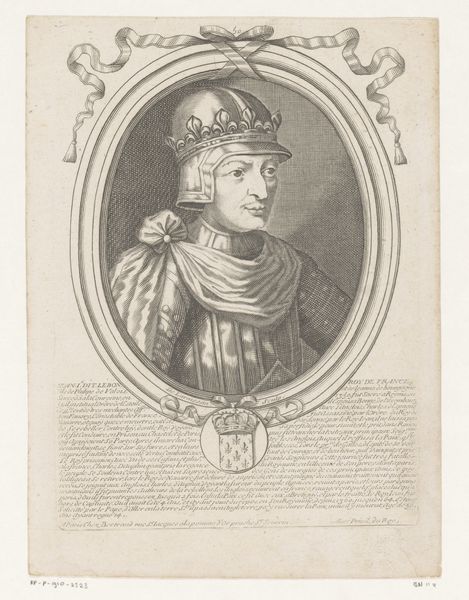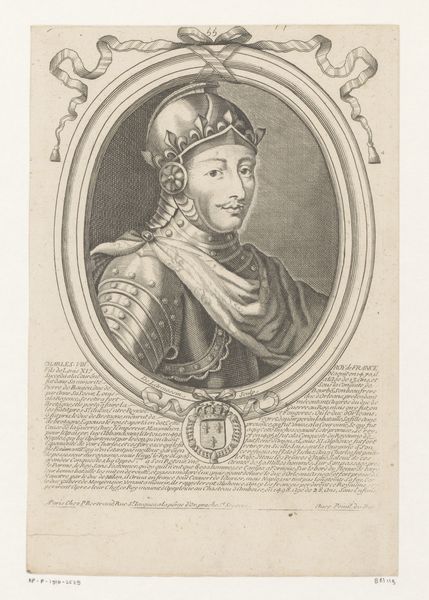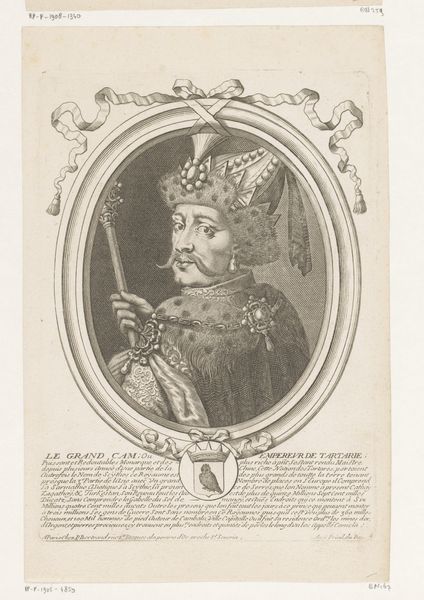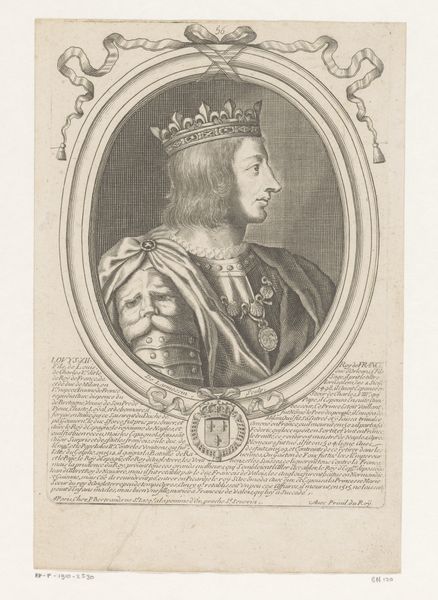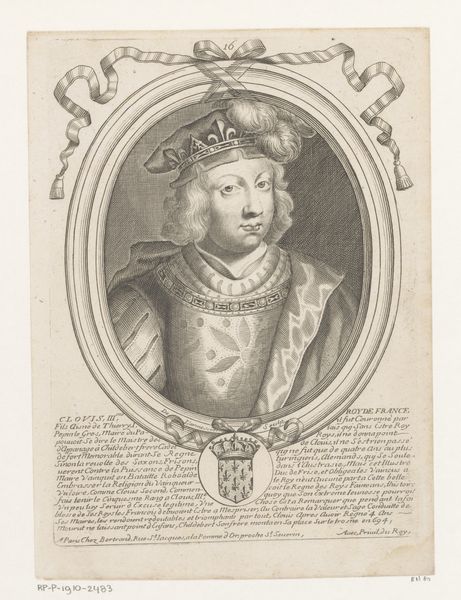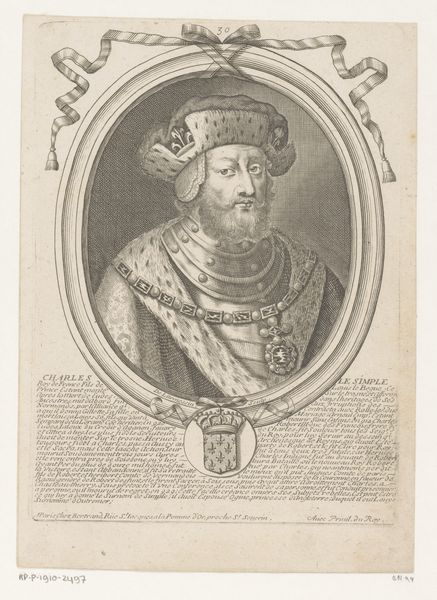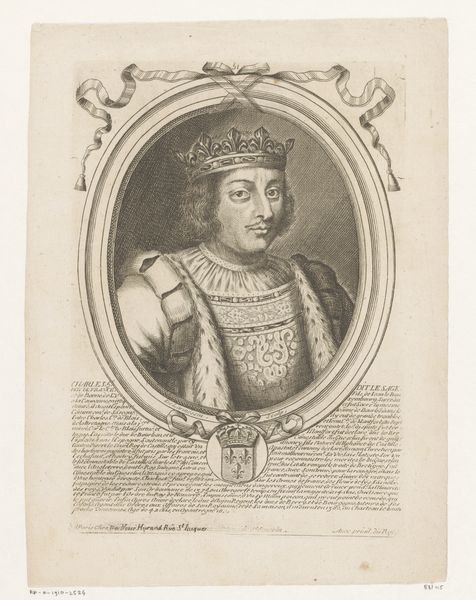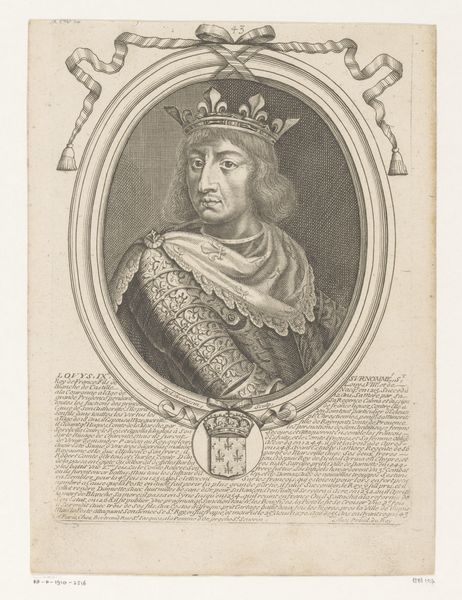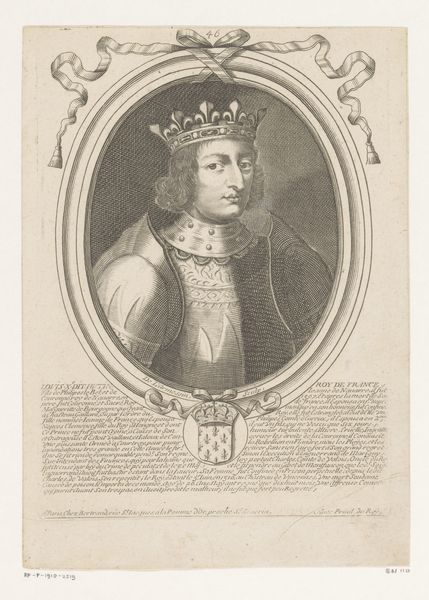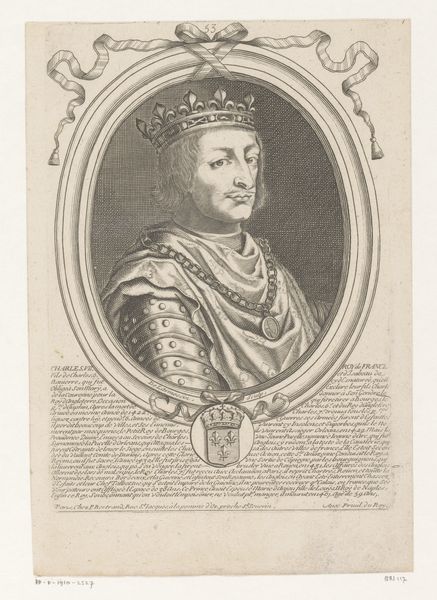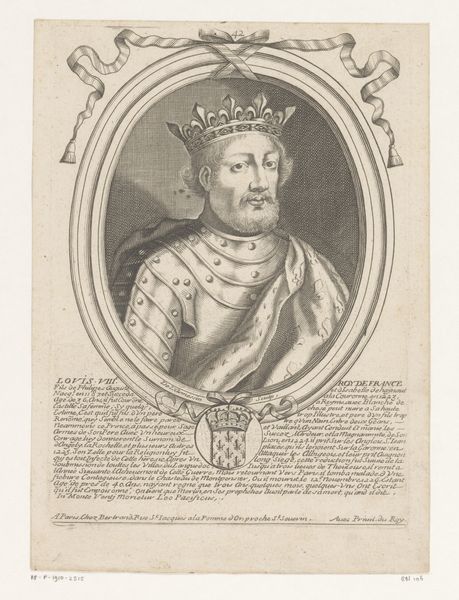
engraving
#
portrait
#
baroque
#
old engraving style
#
traditional media
#
line
#
history-painting
#
engraving
Dimensions: height 231 mm, width 163 mm
Copyright: Rijks Museum: Open Domain
Curator: Here we have a print from somewhere between 1642 and 1678, "Portret van Karel VI, koning van Frankrijk," attributed to Nicolas de Larmessin. It's currently held here at the Rijksmuseum. Editor: My first impression is that it is strikingly austere. The linear quality almost makes the subject seem like a carved monument rather than a living person. It's also quite flat. Curator: The very medium contributes to that feeling. The work is an engraving, a process that relies heavily on line to create tone and texture. And yes, the cultural memory it evokes also has weight. Kingship carries certain baggage with it, and this seems intentionally designed to show just that, not just in his robes and crown but also with the architectural frame itself. Editor: Speaking of lines, observe how Larmessin varies their thickness and density to model the king's face and create depth within the fur trim. See how light delicately plays across the high points while shadow subtly defines his features. The meticulous technique lends an almost tangible quality to the figure, drawing the viewer in. It's beautiful despite its limited tonal range. Curator: Exactly. Line serves a symbolic purpose here. There is clarity, authority, and it suggests immutable order and control. A kind of implied divinity hangs on the figure, if you can read the cultural symbolism and tropes, or have any concept of kingship. The sharp lines that render Charles VI feel permanent, unchanging. Editor: I concede, the engraving is surprisingly dynamic given its stylistic restraint and emphasis on linear precision. Curator: In many ways, this work invites the viewer to ponder about the performance of power and legitimacy in this portrait and throughout history. How do we remember, or idealize a King? Editor: Indeed. It reveals, paradoxically, the way art can shape both our understanding and imagination of history through its manipulation of form.
Comments
No comments
Be the first to comment and join the conversation on the ultimate creative platform.
